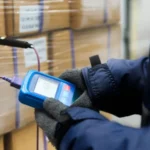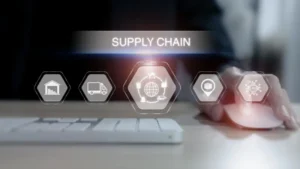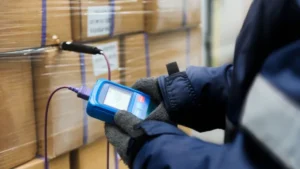Monitoring international shipping can be challenging at times, especially when we talk about tracking your sea cargo. Whether you are a business owner or an individual, understanding the status and the real-time location of your shipment is important. That’s where sea cargo tracking comes in. This important process makes sure that your items are well-navigated throughout their journey, giving peace of mind and transparency.
A Quick Glimpse of Sea Cargo Tracking
Sea cargo tracking includes the monitoring of the movement of shipping containers and goods transported by sea. This tracking process is vital for anyone involved in logistics, as it provides real-time updates on the location and status of shipments. Tracking allows you to stay informed, manage logistics effectively, and respond swiftly to any potential issues.
Learn the Importance of Sea Cargo Tracking
Sea freight tracking offers multiple benefits, which in turn makes it out as the essential component of the shipping process. As international trade is growing rapidly, the need for efficient tracking systems has become increasingly vital. Here are some key reasons why sea cargo tracking matters:
- Visibility and Transparency: Sea container tracking allows you to monitor the exact location of your cargo at any given time. This level of transparency builds trust between businesses and their customers. When customers know exactly when to expect their shipments, their satisfaction increases substantially.
- Better Planning: Accurate tracking information enables businesses to plan more effectively. With real-time updates to track sea shipments, companies can better schedule deliveries, manage inventory levels, and coordinate with suppliers. This planning helps in decreasing bottlenecks and the risk of any sort of potential discrepancy, ultimately leading to improved operational efficiency.
- Risk Management: Shipping by sea carries has certain set of risks attached to it, such as unpredictable weather, delays, and customs challenges. Tracking your cargo while it’s on the move allows you to quickly identify and respond to potential issues as they arise, which is a common issue in sea transport service. This proactive approach also mitigates the chances of financial losses.
- Customer Satisfaction: Keeping customers informed about the status of their orders is crucial for maintaining their confidence in your business. Sea cargo tracking systems can send automated updates, letting customers know where their shipments are and when they are expected to arrive.
How to Track Your Sea Cargo
Tracking your sea cargo is simpler than you may imagine. With just a few easy steps, you can stay informed about your shipments. Each step helps you monitor your cargo’s journey. Follow this guide to ensure you never lose sight of your valuable goods.
- Step 1: Obtain Your Tracking Number: When you book your shipment, you will receive a unique tracking number from the shipping company. This number is crucial for tracking your cargo and accessing real-time information about its journey.
- Step 2: Visit the Shipping Company’s Website: Most shipping companies offer an online tracking page on their websites for ocean cargo tracking. This is where you’ll enter your tracking number to find detailed information about your cargo.
- Step 3: Review the Tracking Information: The tracking page will display where your cargo is located, recent updates, and estimated arrival times. Pay attention to this information, as it can help you manage logistics and plan for deliveries or any necessary adjustments.
- Step 4: Notifications: Many shipping companies will send notifications of your cargo. You can receive notifications via email or text whenever there are updates. This way, you stay informed without needing to check the tracking system manually, making it easier to manage your shipments.
Common Challenges in Sea Cargo Tracking
While sea freight container tracking is an invaluable tool for monitoring shipments and ensuring a smooth logistics process, it does come with its own set of challenges. As global trade continues to expand, businesses and individuals increasingly rely on tracking systems to provide real-time updates on their cargo. Here are some key issues you might encounter:
- Inaccurate Information: Tracking information can sometimes be delayed or inaccurate, leading to confusion about your cargo’s status, including sea freight container sizes. This may occur due to technical glitches, human errors during data entry, or unforeseen problems at sea, such as changes in routes.
- Customs Delays: Customs procedures can sometimes lead to delays that are outside your control. Shipments may be held longer than expected due to paperwork issues, inspections, or regulatory compliance checks.
- Connectivity Issues: Cargo ships often travel through areas with limited internet connectivity, leading to gaps in tracking data. This can make it challenging to receive real-time updates, especially during long journeys.
Sea cargo tracking is an essential part of modern shipping. It provides visibility, enhances planning, and improves customer satisfaction. By understanding how to track your shipments, you can navigate the complexities of international shipping more effectively. For reliable tracking solutions, rely on Travelite, which offers support to ensure your shipments are monitored smoothly throughout their journey.









